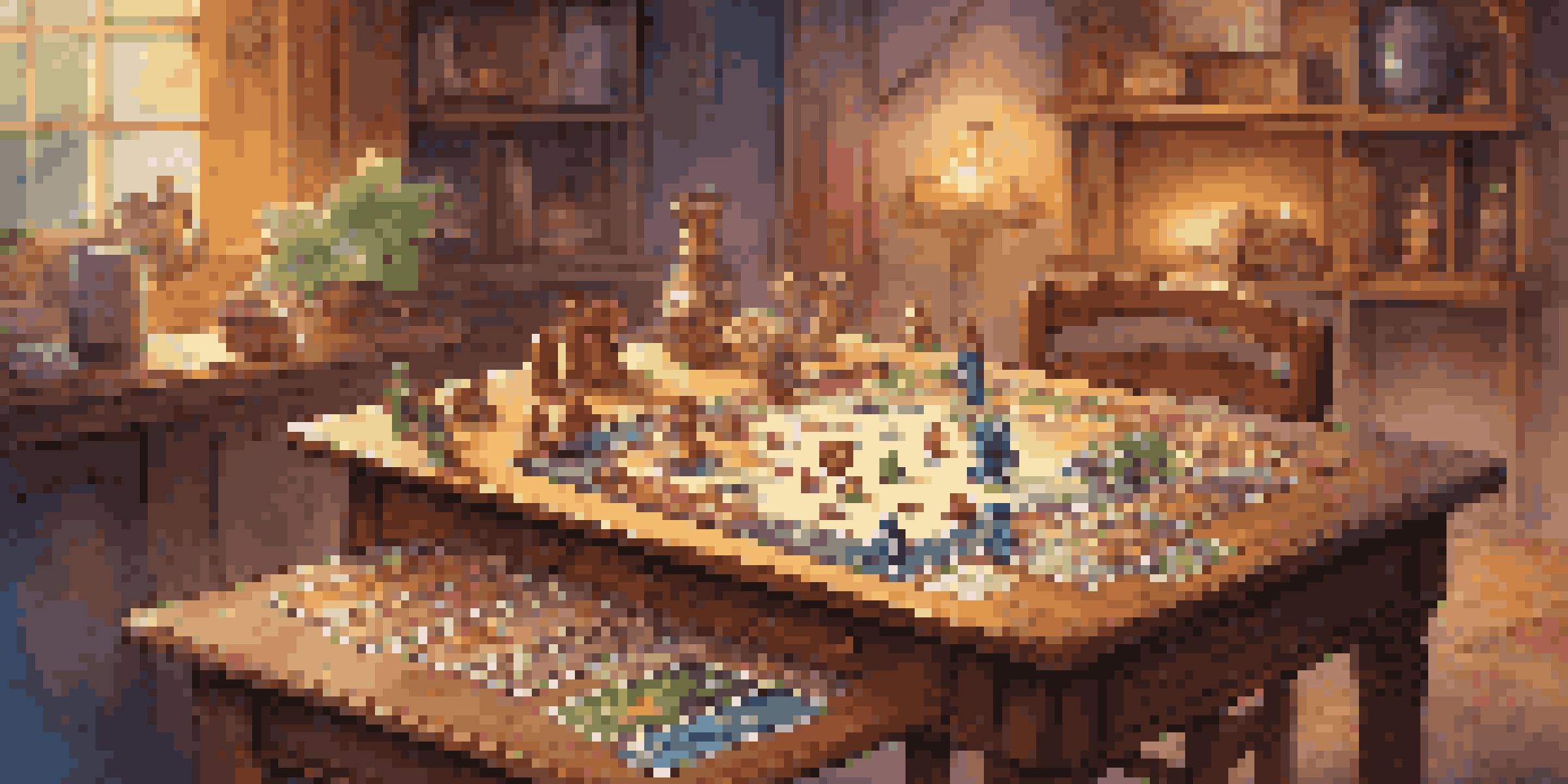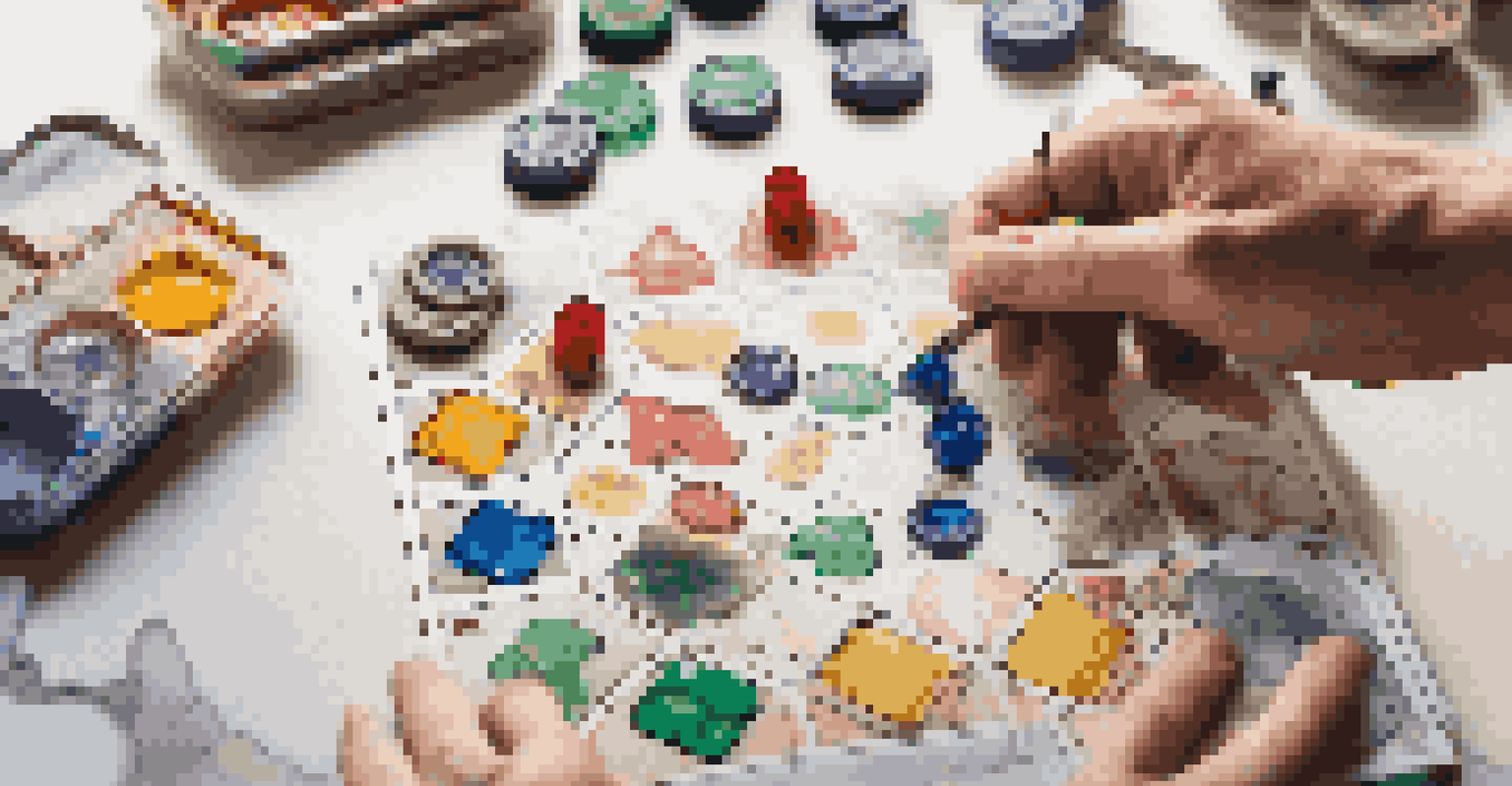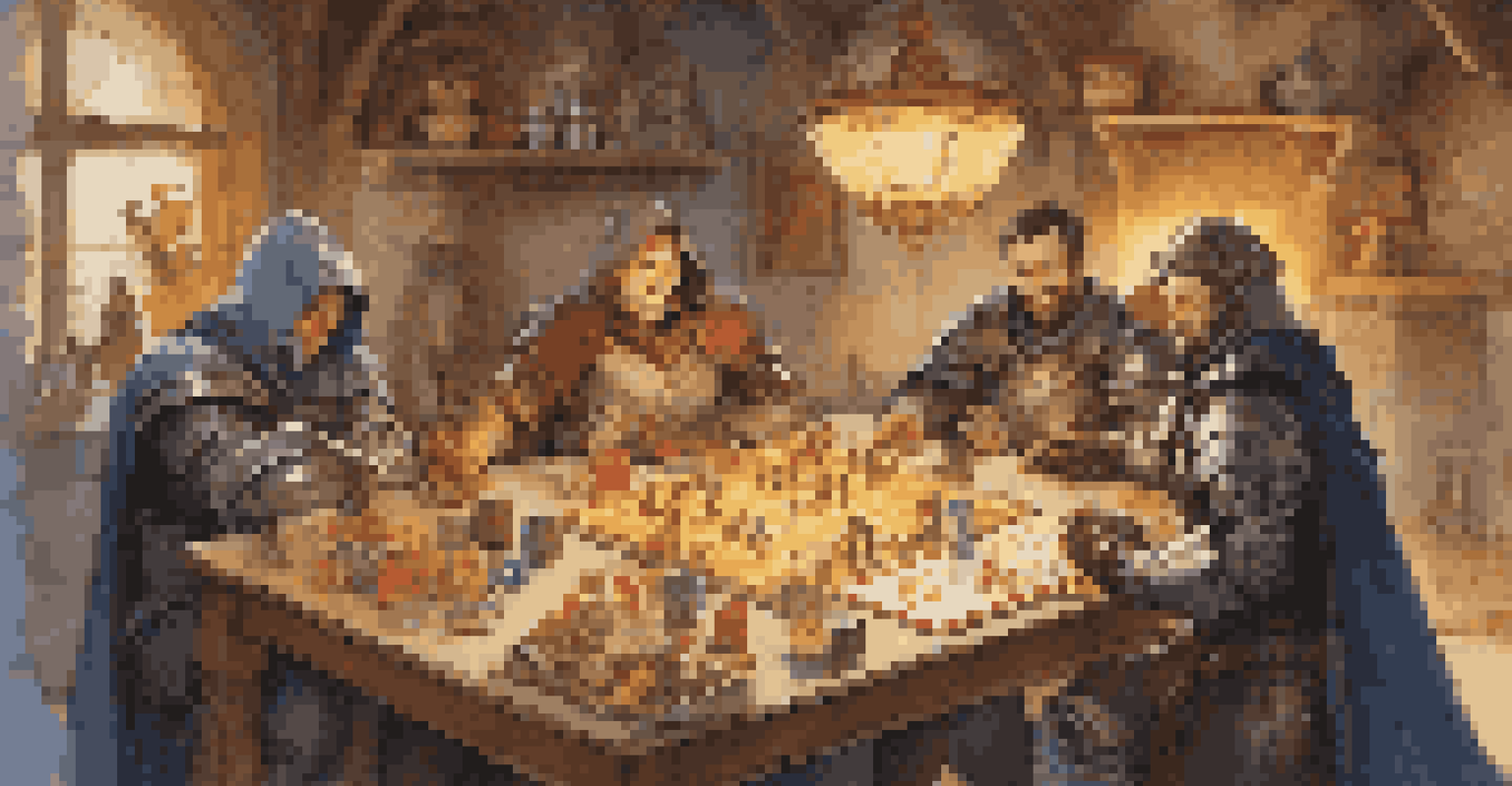Exploring the Art and Design of Board Game Components

The Importance of Aesthetics in Board Games
Aesthetics play a critical role in board games, as they set the mood and theme. Just think about how the vibrant colors and intricate artwork on a game box can draw players in. These visual elements create an immediate connection, getting players excited to dive in.
Design is not just what it looks like and feels like. Design is how it works.
When the components look appealing, they enhance the overall gaming experience. For example, a beautifully illustrated game board can transport players to another world, making the gameplay feel more immersive. It’s like stepping into a movie where you get to be the hero.
Moreover, good aesthetics can also facilitate gameplay by making elements easier to identify. This clarity can lead to smoother game sessions, as players won’t struggle to understand what each piece represents. In essence, aesthetics are not just about looks; they are integral to the gaming experience.
Functionality Meets Form: Designing Game Pieces
While aesthetics are essential, functionality is equally crucial when designing game components. Each piece should not only look good but also serve its purpose effectively. Imagine a game with beautifully crafted dice that are too heavy to roll; they would detract from the fun, right?

Designers often prototype different shapes and materials to find a balance between appearance and usability. For instance, a well-designed player token should be easy to grasp and maneuver, helping to keep the gameplay fluid. The goal is to create components that enhance the flow of the game, rather than hinder it.
Aesthetics Enhance Gaming Experience
Visually appealing components draw players in and create an immersive gameplay atmosphere.
Ultimately, the best game pieces are those that players can easily relate to and interact with. Think about how satisfying it is to pick up a piece that feels just right in your hand. This tactile experience can elevate the enjoyment of the game significantly.
The Role of Theme in Component Design
The theme of a board game greatly influences its component design. Whether it’s a fantasy adventure or a historical simulation, the components need to reflect the game’s narrative. For example, a medieval-themed game might feature wooden knights and castles, immersing players in its world.
Good design is as little design as possible.
Theme-driven design helps create a cohesive experience, making players feel like they are part of the story. When components align with the game’s theme, they evoke emotions and connections that enhance player engagement. It’s like wearing a costume; it helps you get into character.
Moreover, thematic components can also serve as teaching tools, conveying the game’s objectives and mechanics. When players see a component that fits the theme, they can often intuitively understand its purpose. This synergy between theme and design is what makes a game memorable.
Innovative Materials and Techniques in Board Game Design
The materials used in board game components have evolved significantly over the years. Designers now experiment with plastics, metals, and even biodegradable materials to create unique gaming experiences. This innovation opens up a world of possibilities for texture, weight, and durability.
For example, using high-quality cardstock for cards can enhance their longevity while providing a premium feel. On the other hand, incorporating miniatures made from resin can add a stunning visual appeal to a game. These materials not only improve the game’s aesthetics but also its overall experience.
Functionality is Key in Design
Game pieces must balance attractiveness with usability to ensure smooth and enjoyable gameplay.
Additionally, new printing and production techniques allow for more intricate designs and details. This means that components can become more than just functional pieces; they can be works of art in their own right. As technology advances, the future of board game components looks brighter than ever.
Prototyping: The Backbone of Component Design
Prototyping is a fundamental part of designing board game components. It allows designers to test their ideas and make adjustments before final production. Think of it as a dress rehearsal where all elements are put to the test to ensure they work well together.
During prototyping, designers can evaluate the feel and functionality of each piece. For instance, they might discover that a token is too small, making it hard to handle during gameplay. This feedback is invaluable and can lead to significant improvements in the final product.
Moreover, prototyping encourages creativity, as designers can explore unconventional ideas without the pressure of finality. This phase often leads to unexpected innovations that can elevate a game beyond its initial concept. It’s this iterative process that shapes the best board games we enjoy today.
Player Interaction and Component Design
Player interaction is a vital aspect of any board game, and component design can significantly influence it. Components should encourage engagement among players, fostering a sense of competition or collaboration. For example, a game that requires players to pass tokens around can create a dynamic atmosphere of interaction.
Designers often consider how players will interact with both the game and each other when creating components. Elements like shared resources or action tokens can spark conversations and strategies, enriching the gameplay experience. This social component can be just as important as the game mechanics themselves.
Future Trends in Board Games
Innovations in technology and sustainability are shaping the future of board game component design.
Additionally, thoughtful component design can help prevent confusion and miscommunication among players. Clear symbols and intuitive layouts can guide players through their interactions, making the game accessible to newcomers. Ultimately, a well-designed game fosters memorable moments, making every session unique.
The Future of Board Game Component Design
As the board gaming community continues to grow, the future of component design looks promising. Designers are exploring new ways to integrate technology, such as augmented reality, into their games. This could lead to a more immersive experience, blending the physical and digital worlds.
Moreover, sustainability is becoming a key focus in component design. Many creators are seeking eco-friendly materials and production methods, ensuring that their games are not just enjoyable but also responsible. This shift reflects a growing awareness of environmental impact among both designers and players.

Finally, community feedback is playing an increasingly important role in shaping game components. Many designers actively seek input from players during the design process, leading to games that better meet their audience's preferences. As collaboration between creators and players continues to flourish, we can expect even more innovative and engaging board games in the years to come.